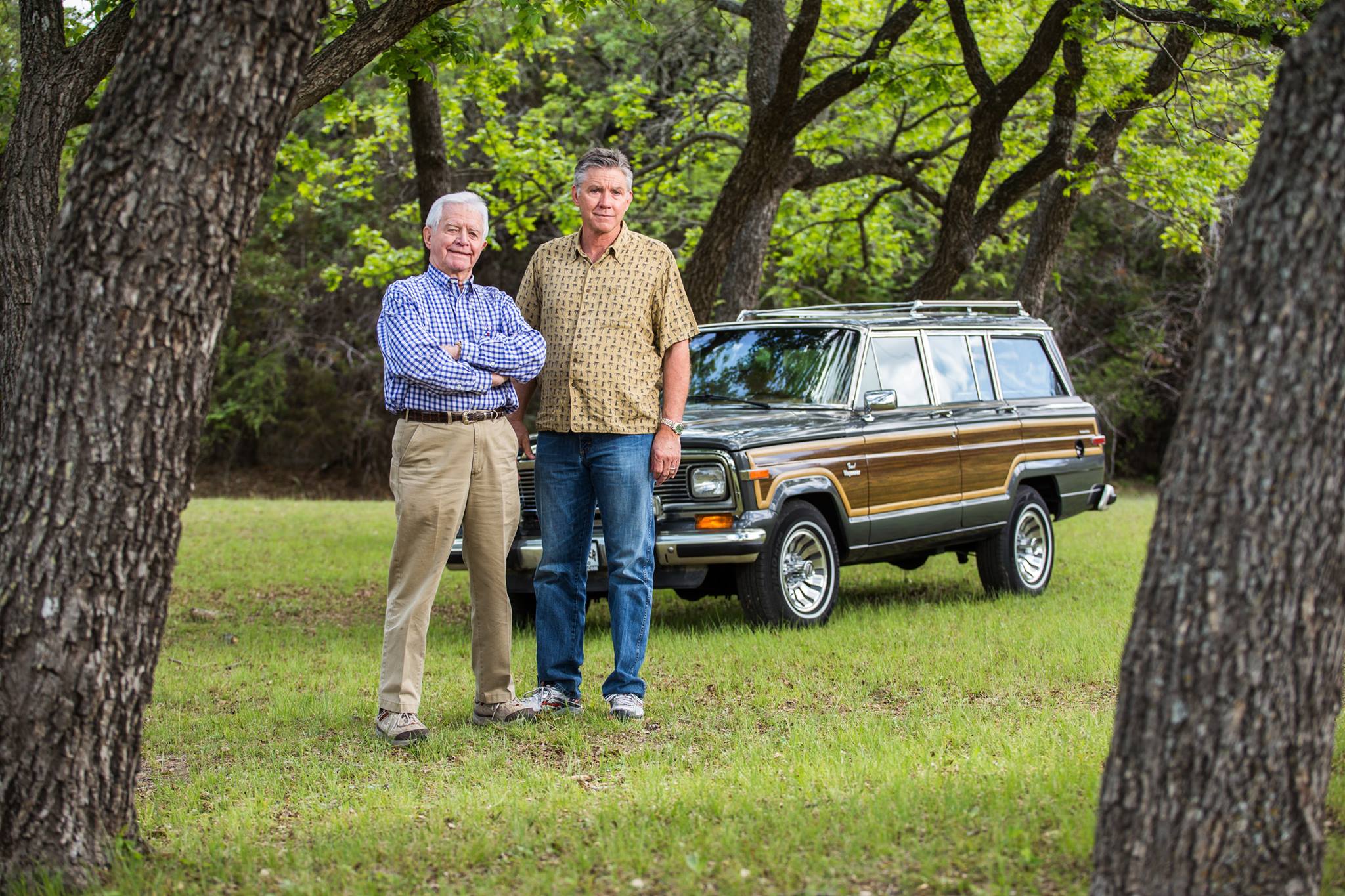The Jeep Grand Wagoneer was an iconic sport utility vehicle dating back to even before SUV was ever coined as a hip genre of automobile. For many it was the original 4-wheel drive wagon allowing a sporty flair, not only for off-road adventure, but also toting around the family and perpetual drives to the grocery store. For Jeep/Chrysler, the Brook Stevens design was a gold mine, making its way from the woodsy trails to suburbia driveways across the map. With the signature woodgrain panel sides, the Woody was recognized coast to coast as the go-to family four-by.
For Chip Miller of Wagonmaster Jeep Wagoneers (Kerrville, TX), the Grand Wagoneer has been a lifelong family tradition reaching back to his childhood. His earliest memory of a Jeep was the 50’s-model Willis CJ3B, owned by his grandfather, on a ranch in Dillon, Montana. Miller says he has a picture of his dad holding him at about 2 years old, with the old-style army looking Jeep in the background, with the hood up.
With his baby pictures providing signs of future duties to come, the 70’s pre-woodgrain Wagoneer Limited entered the picture under his father’s ownership and the passion for Wagonmaster began without even knowing it. “I remember when my dad bought his first Wagoneer Limited in late 1978,” says Chip, “It was the first to have the full woodgrain.” The following year, Chip’s father, Leon, purchased his second Wagoneer as another workhorse for their ranch in Texas. “Versus the open air CJ, with no air conditioning and such,” says Chip, “the Wagoneer was also something that you could get out on the highway for a comfortable drive into town. In 1982, he bought another.”
In 1984, Jeep changed the name to Grand Wagoneer. The wrap around tail lights were replaced by an embedded upright tail light (similar to the Jeep Cherokee), and Jeep/Chrysler added headrests. Both updates were incorporated into the design until the discontinuation of the model in 1991. “We were a family of six kids, and the Grand Wagoneer remained as our ‘people transporters’ throughout the decades.”

“We come by all of this (Wagonmaster) business honestly,” says Miller. “When I joined my dad in 2010, I began to listen to our customers’ interests and motivations, it’s still the same thing with their Wagoneer too. That it’s the family heirloom, it’s the heritage, tradition and legacy of their memories; fishing trips, riding in the backseat with the neighbors, the dentist three-doors down having one in the driveway and the eagerness to have one too. And we’ve been lucky to speak to and hear the stories from the Chrysler designers that were in the trenches when assigned the tasks for the new truck to compete with Chevy and Ford.
With their stock well entrenched into the Grand Wagoneer lineage, Wagonmaster has restored over 2000 vehicles, and the shop may have 70 to 90 Wagoneers on hand at any given time. “We continually hear stories of trucks for sale out there and we try to be picky in our selections,” says Miller. “The low mile, barn finds go to the front of the pack, and begin immediate restorations, so we can bring it back to life and get into the hands of our customers. We update the car and our 26 years of business is always forward progression for parts and systems processes, and typically in prices as well. We are always moving forward, producing a steadily more and more enhanced Wagoneer. Plus in doing so, we are raising the value of all the others out there as well.”

For example, Wagonmaster perpetuated the carburetor fuel intake for the first 18 or 19 years of business. “As improvements surfaced, we then offered the option of carb or injection (circa 2014). After a year’s time phasing out of the carburetor, however it was clear that injection was the way to go,” says Chip. “Increased additives from the refineries made it tougher and tougher for the carburetor to remain tuned. Modern day fuel formulas were causing the repeated need for carb. rebuilds and we had to eliminate the issue. My dad wanted us delivering vehicles, easy for anyone to drive; without choking, pumping without it dying, blowing power valves, without the backfire and the continual issues of the carburetor. Our customers experience the same nuisance many times, as a helpful incentive for them to sell the car to us instead.”
Miller says, “We chose Howell Fuel Injection as our vendor because they had a much more simple, throttle body-type system that easily bolted on, providing us the ability to install and manage the settings on our own. Plus, we needed an injection system compliant within all 50 states including the California Air Resources Board. With the longevity of the company, and one of the original fuel injection systems on the market, Howell helps us deliver a product of our service, that meet’s my dad’s standard, for the ease of driving a Wagonmaster rebuild.”
Miller approximates that Wagonmaster has installed over 300 Howell injection systems in their vehicles, to date.
-

-

-

-

-

-

-
 #HJ283 – 283 CID I6 Jeep TBI Conversion KitPrice range: $1,500.00 through $1,560.00
#HJ283 – 283 CID I6 Jeep TBI Conversion KitPrice range: $1,500.00 through $1,560.00 -
 #HJ232 – 232 CID I6 Jeep TBI Conversion KitPrice range: $1,500.00 through $1,560.00
#HJ232 – 232 CID I6 Jeep TBI Conversion KitPrice range: $1,500.00 through $1,560.00 -


